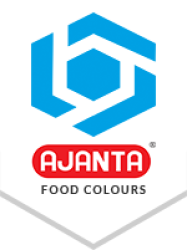Indonesia, officially known as the Republic of Indonesia, is the world’s largest archipelago located in the Asian Continent. Indonesia is famous for its natural beauty, exotic islands, and cultural richness, with stunning beaches of Bali and the temples of Yogyakarta, to the volcanic peaks of Java. The country shares its border with Malaysia on the island of Borneo (Kalimantan), Papua New Guinea on the island of New Guinea, and Timor-Leste (East Timor) on the island of Timor. Indonesia also shares maritime borders with Australia, the Philippines, Singapore, Thailand, and India across the Indian and Pacific Oceans.
Indonesia has emerged as a growing manufacturing hub in South Asia. The country’s manufacturing sector plays a crucial role in its GDP. These manufacturing industries not only fuel economic growth but also support millions of local jobs. In the manufacturing of any product, various small and large components play an important role. Some help in the manufacturing of products, and some improve the product appeal that attracts the attention of consumers and boosts the product sales, one of them is colour.
Indonesian colour manufacturers produce colourants locally, but their production is not sufficient to meet the growing colour demand of the country. To bridge this gap and make a profit, major colour merchants, distributors, and traders import synthetic colours at low prices from countries like India, China, and Denmark, and sell them at higher prices in the Indonesian market. Some resell the colourants under the original brand name, while others create their own labels and market them under their own branding.
Indonesia Industries Where Colours Play a Vital Role
Colour plays a crucial role in the various manufacturing industries of Indonesia. Some of the key industries include:
Food and Beverage Industry
In the Indonesian food and beverage manufacturing industry, colours play a crucial role. Colour makes food products such as Soft Drinks, Fruit Juices, Energy Drinks, Cookies, Pastries, Ice Cream, Frozen Desserts, Instant Noodles, Jelly, Puddings, Sweets, Processed Foods, Sauces, and Condiments, appealing to consumers that attracts their attention and boost the product sales. However, Indonesian food manufacturers often face some challenges in selecting the right colour for their products. Manufacturers want high-quality food colours that do not fade or change on products over time. By using synthetic food colour in their products, Indonesian food manufacturers can overcome all their colour-related problems and achieve the desired colour for their products. These colours come in various high-quality shades that make the product appealing and fresh for a long time, ensuring the stability, consistency, and regulatory compliance of the product, which is very crucial for food products. These appealing coloured products attract the attention of consumers, which boosts product sales and brand recognition in the market. In Indonesia, major of the food and beverages manufacturing industry is located near its big cities like Jakarta, Surabaya, Bandung, and Medan. According to Statista, the revenue of the food market of Indonesia is the amount to US$255.38 billion in 2025, and it is expected to grow annually by 6.86% (CAGR 2025-2030).
Cosmetic Industry
Colour is an important component of cosmetic products. It is used in various applications such as lipsticks, foundations, eye-liner, blusher, and concealer, making them appealing to consumers. However, Indonesian cosmetic manufacturers often face some challenges in selecting the right colour for their products. Cosmetic manufacturers want high-quality pigments to make their products appealing to consumers and do not fade or change over time. Synthetic cosmetic colours are an ideal option to overcome all the colour-related problems of cosmetic manufacturers in Indonesia. These colours come in various colour shades, allowing manufacturers to create a unique coloured product that increases brand recognition of the product in the market, which ultimately boosts sales. Most of the cosmetic and personal care manufacturing units of Indonesia are located near its big cities like Jakarta, Bandung, and Surabaya, where they have better access to facilities, workers, and markets. According to Statista, the revenue of the Indonesian Beauty & Personal Care market will amount to US$9.74 billion in 2025, and it is projected to grow annually by 4.33% (CAGR 2025-2030).
Pharmaceutical Industry
In Indonesia, colours play an important role in the field of the pharmaceutical manufacturing industry. They make medicines such as tablets, capsules, syrups, injectables, and drops vibrant and bright, which helps pharmacists and patients to recognize medicines easily, reducing the chances of taking the wrong medicines. These vibrant coloured medicines also help the manufacturer to establish a brand recognition of their product in the market, which wins patients' trust. However, pharmaceutical manufacturers of Indonesia often face some challenges in selecting the right colour for their medicines. They want stable and premium quality colours for their medicines that do not spoil or bleed over time. In this, synthetic food-grade colour plays a crucial role. Synthetic food-grade colours come in various high-quality colours that do not spoil, change, or bleed on medicines during manufacturing and storage. In Indonesia, most of the pharmaceutical manufacturing industries are located in Jakarta, Bandung, Surabaya, and Semarang. According to Statista, the pharmaceutical market in Indonesia is estimated to achieve a revenue of US$3.78 billion by 2025, and it will experience a steady annual growth rate of 4.85% from 2025 to 2030 (CAGR 2025-2030), resulting in a market volume of US$4.79 billion by 2030.
Chocolate Industry
Colour is a crucial part of the chocolate manufacturing industry in Indonesia. Colour makes chocolate products appealing to customers, especially for children and women who are the prime consumers of chocolate products. However, chocolate manufacturers of Indonesia often face some challenges in selecting the right colour for their products. They want premium quality chocolate colour that makes their chocolate appealing and does not fade or change over time. Manufacturers can overcome their challenges by using synthetic food colour in their chocolate. These colours come in premium quality, which maintains the quality and stability of chocolate products for a long time. These appealing chocolates attract the attention of consumers and boost the product sales and brand recognition in the market. Most of the chocolate manufacturing units of Indonesia are located in Bandung Regency (West Java), Tangerang City (Banten), Bandung City (West Java), Tangerang Regency (Banten), and Bogor Regency (West Java). According to Statista, the revenue of the Indonesian Chocolate Confectionery market amounts to US$919.38 million in 2025, and it is expected to grow annually by 7.31% (CAGR 2025-2030).
Animal Feed Industry
Colours also play an important role in the animal feed manufacturing industry of Indonesia. Colour makes the pet food appealing, which captures their attention and encourages them to eat properly so they to be healthy. However, Indonesian pet food manufacturers often face some challenges in selecting the right colour for their products. Manufacturers want stable and premium quality colour for animal feed, which helps them to create a good brand image of their product in the market that boosts sales. Animal feed manufacturers overcome their challenges by using synthetic pet food colour in their products. Synthetic pet food colours are stable, consistent, and fulfill regulatory compliance. Moreover, synthetic colours can help buyers identify and differentiate between various types of animal feed, such as poultry, swine, or cattle. In Indonesia, most of the pet food manufacturing industries are located near Jakarta, Surabaya, and Bandung.
Cultural Preferences of Colours in Indonesia
In Indonesia, the reflection of colours is shown in its cultural preferences. Different colours have different meanings and associations for different ethnic groups, religions, and occasions in Indonesia, that are reflected in people’s shopping choices as well. For instance, Indonesians normally pick bright shades such as red, orange, yellow, and green for food and drink items. In makeup products, they select white, pink, or purple hues that express beauty, classiness, or womanliness. As for chocolates, they mainly like deep brown or black tones that bring a feeling of wealthiness, high standard, or treat. Manufacturers of Indonesia know these cultural favorites and make their products accordigly to increase sales and brand recognization of the product in the Indonesian market.
Regulatory Guidelines on Colours in the Indonesian Market
In Indonesia, the use of colours in products such as food, beverages, pharmaceuticals, and cosmetics is regulated by the Food and Drug Monitoring Agency (BPOM). The BPOM issues guidelines and criteria for the distribution and safety of these products, as well as the labelling and packaging requirements. The BPOM also supervises the quality and nutrition of food products, as well as the halal certification for consumer products in general. These governmental regulations help the customers to make informed choices and protect their health and well-being. Manufacturers should comply with all these regulations to ensure their products meet the standards and avoid legal sanctions, product bans, and recalls.
Starting a new business in Indonesia is also a challenging task. Startups have to compete with businesses that are already in the market. Startups can overcome their many problems by using only high-quality synthetic food colour in their products. Synthetic colour makes the product appealing and attractive, which attracts the attention of customers and boosts sales. They come in various colour shades that allow manufacturers to create a unique coloured product that helps in brand recognition in the market. Plus, these colours are an affordable option compared to other colour alternatives, so they allow manufacturers to launch their product at a competitive price in the market.
If you are a manufacturer or a startup business looking for high-quality colour for your product, you can go with Ajanta Food Colours, a leading synthetic food colour manufacturer in India with over 75 years of legacy. The company offers competitive prices, timely delivery, customised solutions, and technical support, ensuring cost-effectiveness and client satisfaction. For the quality and safety of its colourants, Ajanta received various awards and certificates from India and from other countries where Ajanta exports its high-quality colours.
Some of the awards and certificates received by Ajanta Food Colours include the Arch of Europe Award, the Bureau of Indian Standards (BIS) Award, certifications from the Food Safety and Standards Authority of India (FSSAI), the US Food and Drug Administration (US FDA), as well as Halal, Alcumus ISOQAR, Star-K Kosher, Food Safety System 22000 (FSSC 22000), and ISOQAR certifications, among others.
To know more about Ajanta Food Colours and its Supra range of colours, or for any other information, please contact us today!





